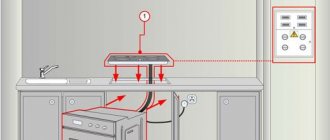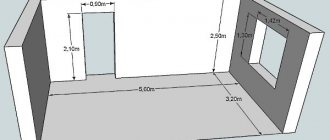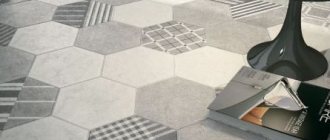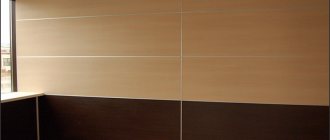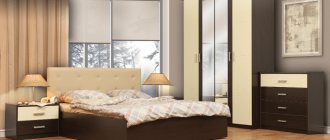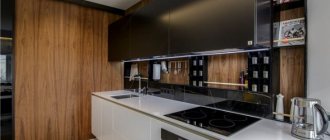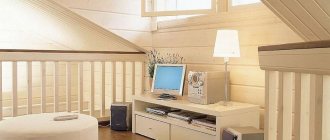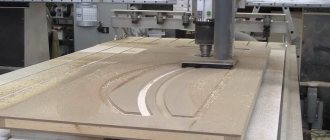A stove with a glass-ceramic coating is safer to use than a gas stove, reduces cooking time, and fits seamlessly into the design of the kitchen. However, the wrong choice of cookware for glass ceramics shortens the life of the appliance and affects the taste of the prepared dishes. In an attempt to save money, people use old pots and pans, which results in damage to the coating and premature failure of the stove. Don't make the same annoying mistakes.
What cookware is not suitable for glass ceramics?
If you previously had a gas stove in your kitchen, we hasten to disappoint you: most of the pots and pans will have to be thrown away, taken to the country or given to friends.
So, what kind of cookware bottom is not suitable for glass-ceramic stoves?
- Uneven
Air gaps form between the glass-ceramic panel and the curved surface of the container, so the dishes are heated unevenly. Electricity consumption and cooking time increase.
Fire from gas burners quickly deforms the bottom of pots and pans. Unevenness also occurs due to traces of burnt fat. Therefore, old kitchen utensils are not suitable for use on a glass ceramic hob.
- Shershav
Cracks, chips, and patterns on the bottom scratch the ceramic plate, which leads to deterioration in appearance and rapid failure of the heating elements.
- Copper or aluminum
Copper and aluminum are soft metals. When the electric cooktop heats up, they melt and leave marks on the stove that cannot be cleaned. The bottom becomes uneven.
- Small diameter
Such utensils include small saucepans, cauldrons and frying pans with a round base. The food in them does not warm up, and electricity is wasted.
What utensils should not be used?
After purchasing a glass-ceramic panel, you should thoroughly understand the kitchen. Even if the utensil appears durable and suitable for cooking, it may not be suitable for this device.
Even minor roughness, unevenness on the bottom and chips will leave scratches on the device. They cannot be masked or removed. Therefore, it is better to take such pots and pans to the dacha, give them away, or throw them away.
Materials that are useless for kitchen utensils for induction cookers:
- copper;
- aluminum;
- glass;
- ceramics;
- brass.
To check the suitability of special dishes, you can use a regular magnet.
Many hobs will not turn on if the bottom diameter of the products is less than 8 cm. A special icon on the cookware for glass-ceramic cookers on the packaging will make the task easier when purchasing. You should also understand that a quality product will not be very cheap. A price that is too low should alert you; such things should be checked with special care. It may be worth looking for more suitable dishes so as not to overpay later.
Video: which cookware is suitable for a glass-ceramic stove?
Types of hobs
The material of the cookware is selected depending on the type of hob. The coating of all glass-ceramic plates is the same (the composition includes quartz sand), only the heating elements differ.
Electric hob
The following elements can be used to heat the bottom of the cookware:
- corrugated metal tapes;
- halogen lamps (rarely).
Heat flows first to the glass-ceramic surface, and through it to the bottom.
Unlike gas burners, tape and halogen heaters provide a quick temperature rise and operate only at full power. Adjustment of the cooking mode (“high”, “low” or “medium” heat) occurs by periodically turning the elements on and off.
Therefore, utensils made of low-melting metals (copper, aluminum) without a protective coating are not suitable for such stoves.
Suitable materials for electric hob:
- stainless steel;
- aluminum with ceramic or Teflon coating;
- heat resistant glass.
Glass containers do not conduct heat well. You can use them for cooking on an electric stove, but the electricity consumption will increase. The ideal option is to choose dishes with a steel bottom and glass walls.
Induction hob
A high-tech and expensive type of hobs for stoves. Under the glass-ceramic surface there is an induction coil that interacts only with metals that have ferromagnetic properties. Upon contact, eddy currents are formed, heating the bottom.
We recommend: Why do we need silicone insoles, how to choose them and how to care for them?
If you put your hand directly to the burner that is on, you will not get burned. This is the main advantage of induction cookers. Also, the coil does not interact with liquids or food debris, which eliminates the formation of soot and greasy deposits.
However, an induction ceramic hob is demanding when it comes to cookware. Typically, manufacturers mark suitable pots and pans with a special icon in the form of a horizontal spiral.
The following materials are completely useless for use on an induction cooker:
- copper;
- aluminum;
- ceramics;
- heat-resistant glass;
- brass.
Other types of cookware are suitable provided that their bottom is made of ferromagnetic metals.
Tips for choosing
To select the right kitchen utensils, it is recommended to use a magnet, which should be placed on the bottom of the utensil when choosing. If it sticks, the container is suitable for use on an induction hob.
In addition to the above rule for an induction hob, other rules for choosing a suitable container are followed:
- Kitchen utensils must have a perfectly flat bottom. Concave, damaged shapes are not allowed.
- It is worth using kitchenware with a minimum bottom reflection coefficient. Thanks to this, the container heats up much faster, distribution occurs systematically. It is better to choose models with a dark or matte bottom. The glossy surface can reflect heat.
- The bottom must have a thickness of 3 mm. If it is thinner, the cookware runs the risk of becoming deformed during the cooking process. Models that are too thick take a long time to warm up.
- It is important to choose the correct bottom diameter. It must match the heating elements of the stove.
- When choosing aluminum containers, it is recommended to choose models with a painted or steel bottom.
- It is prohibited to use glass-ceramic containers on these stoves. In addition to the weak thermal conductivity of such an element, when using a plate and a container made of the same material together, the likelihood of scratching the surface increases.
Choosing kitchen utensils for a glass-ceramic panel is a labor-intensive and responsible task. But by choosing the right kitchen utensils, you can extend the life of the heating device. At the same time, food is prepared quickly, and energy consumption is rational.
General bottom requirements
As you may have already noticed, the bulk of the requirements are placed on the bottom of the cookware for ceramic electric stoves. Below you will find out what points you should pay attention to so that the device serves you for a long time.
- Surface
The ideal bottom of glass ceramic cookware is flat and smooth. A concavity in a cold state of no more than 0.6% of the diameter is allowed. When heated, the bottom expands slightly and fits tightly to the surface of the stove.
Any irregularities and roughness lead to poor heat transfer to the dishes. The electric stove overheats, which leads to a reduction in service life, and energy consumption increases.
Typically, cookware for glass-ceramic hobs is treated with a protective compound that prevents scratches, bends, and gouges.
- Thickness
The thicker the bottom, the better. You've probably noticed how quickly food, especially liquid food, burns on thin aluminum pots and pans. Therefore, you need a thick bottom that will heat evenly and will not deform due to high temperature.
As a rule, the bottom of a pot for a ceramic stove consists of 3-5 layers of different metals: stainless steel, aluminum alloy. This increases strength and improves heat distribution.
- Color
The light, glossy surface reflects heat radiation, which increases cooking time and electricity consumption. The bottom of glass ceramic cookware should be dark and matte.
- Diameter
If you are selecting dishes for an electric stove, then keep in mind that the diameter of the bottom of the pan (frying pan) must fully correspond to the diameter of the burner. Using kitchen utensils with a small bottom leads to problems - wasted energy consumption, overheating of the electric stove and the danger of getting burns from touching an open hot surface.
Pots and pans with a bottom larger than the diameter of the burner do not heat up completely.
For induction appliances, a more loyal principle applies, because the coil only heats the dishes. It is desirable that the bottom matches the diameter of the burner, but it can be smaller. If you place a large frying pan on a small circle, only part of the bottom will heat up, which will increase the cooking time.
We recommend: How to find out the taste of a melon without cutting the fruit: choose the ripest and sweetest one
Features of heating dishes
The burners of the glass-ceramic stove are heated by heating elements. The heat sources are located under the ceran plate that forms the base of the panel. The glass-ceramic coating has high thermal conductivity and resistance to mechanical damage. The cookware is heated using the following types of burners:
- Tape. The heating element is made of high resistance alloy. The tapes are tightly laid, which increases their heat transfer. 5-6 seconds are enough for complete heating.
- Rapid. They have the simplest design. Nichrome spirals heat up in 10 seconds. Round burners can be of different sizes. Electricity consumption depends on their size.
- Halogen. The heating element is represented by a quartz gas-filled tube. You can start cooking within 2 seconds after turning it on. The amount of electricity consumed is higher than other models.
- Inductive. The safest and most expensive type of burners. They heat not the cooking surface, but the bottom of the pan, which reduces the risk of burns to a minimum. The efficiency of energy consumption is due to the ability to adjust the power of the device as accurately as possible.
Cookware for electric stoves
It is easier to choose cookware for a regular glass-ceramic hob than for an induction hob. But which material is better?
- Stainless steel
The most suitable type of material for glass-ceramic electric stoves. It is durable, resistant to aggressive chemicals (alkalis, acids), heats up evenly, and does not deform due to high temperatures. Easily washed off from grease and food residues using a regular soap solution.
It is desirable that the bottom be marked 18/10 (18% chrome, 10% nickel). Stainless steel with this composition is harder and more wear-resistant.
- Cast iron
It is advisable to buy cast iron with a protective coating or at least special heat treatment. Otherwise, the bottom will quickly attract particles of food and fat and become rough. You can use cast iron cookware, but it requires careful care.
- Aluminum
Allowed as a wall material. It is also allowed to use aluminum pans if their bottom is thick or has a ceramic or Teflon coating.
- Enameled cookware
It is not advisable to cook food in it on a glass-ceramic hob. Typically, enamel pans have a thin bottom that is susceptible to deformation, and the coating quickly becomes scratched.
- Heat resistant glass
The glass container looks aesthetically pleasing and is suitable for use on ceramic hobs. However, food takes a long time to cook due to the low thermal conductivity of the material. It is better to use glassware in the oven or microwave.
Pay attention to the manufacturer's markings. If a product is marked “for electric stoves,” this does not mean that the cookware is suitable for use on a glass-ceramic hob.
What can be used
Despite many restrictions, choosing cookware for cooking on a glass-ceramic stove is not so difficult or expensive. An audit of the kitchen will make sure that many pots, ladles, frying pans, teapots and cast iron pots will be suitable for a high-tech stove.
So, we select from the utensils (except for those contraindicated) for the new glass-ceramic stove:
- A container with an ideal, flat bottom will increase thermal conductivity due to its strong adhesion to the hob. The result will be a minimum cooking time, reduced energy costs and an increase in the service life of the stove.
- Kitchen utensils with ferromagnetic properties. It’s easy to check their presence - you need to use a magnetized material: the dishes are attracted by a magnet - suitable for an induction surface.
- The diameter of the bottom must correspond to the diameter of the selected burner. It will not be critical if it is slightly larger than its size.
Let us pay attention to the material from which the dishes for special stoves should be made.
Stainless steel is the ideal choice from a practical and aesthetic point of view. Dishes made of this material conduct heat well, so food is cooked in it at the lowest setting in a short time.
The design of shiny or brushed steel contrasts with dark glass ceramics for a stylish look.
Enameled cookware meets the requirements of glass ceramics. During purchase and operation, you should pay attention to the inadmissibility of chipping the enamel.
You can choose a whole collection from this inexpensive material
Aluminum coated with a ceramic layer or treated with Teflon. If aluminum cookware has a special marking on the bottom, you can safely use it, given that it has excellent heat-conducting properties.
Thick-walled cast iron with a flat bottom can be used on newfangled cooking surfaces
Requirements for cookware parameters:
- bottom thickness more than 7 mm;
- wall thickness more than 0.5 mm;
- tight-fitting lid with a hole for steam to escape.
If there is a need to replenish the stock of special utensils, the first thing you should pay attention to in the store’s sales area is a special sign.
The marking is an indicator that the dishes will not harm glass-ceramic equipment
When developing cookware for glass-ceramic stoves, manufacturers implement many modern engineering and technological solutions that allow not only to optimize the cooking process, but also to increase the level of work safety.
Cookware for induction cookers
Please note that sometimes manufacturers are disingenuous by marking pots and pans with an induction symbol. Before going to the store for new dishes, we recommend purchasing a magnet. With its help you can check the properties of the bottom. If the magnet is attracted to the surface, the cookware is suitable for use on an induction hob.
It is advisable to buy a saucepan (frying pan) with a bottom diameter of at least 8 centimeters, otherwise the coil may not turn on.
The best material for an induction hob is stainless steel.
What can happen if you choose the wrong kitchen utensils?
Inappropriate or irrational selection of kitchen utensils affects the condition of the stove, both external and internal. Chips and resulting dirt damage the material of the hob. The presence of a gap between the bottom and the panel increases energy costs.
The performance of the panel is affected by uneven bottoms of the pans. This negatively affects the shelf life of the hob and its technical characteristics. First one burner does not work well, then the second. Subsequently, the entire slab will need expert evaluation and repair.
The shelf life of the equipment that surrounds the owners depends on the care and attitude towards the devices. You need to know what cookware is suitable for an induction or electric hob, what materials for utensils are allowed, and how and with what to clean the products.
When you discover the first malfunction, you should contact a technician. He will point out existing problems and errors in use, and give clear recommendations for operation that will keep the equipment in excellent condition.
Useful "tricks"
Typically, cookware for glass ceramics is distinguished by a variety of technological solutions, because its buyers are owners of modern stoves, people with high incomes who value comfort and functionality.
Thus, many pans have thermally insulated handles. You will not get burned if you touch the cookware while cooking. Some models are equipped with a thermometer that allows you to monitor the degree of heating - there is no need to constantly open the lid of the pan (frying pan) and check the readiness of the dish.
Features of glass-ceramic surfaces
The smooth surface of a glass-ceramic hob is very beautiful, but it is also quite easy to scratch. To prevent this from happening, under no circumstances should you place dishes with an uneven or even just rough bottom on the burner. Before placing a frying pan on the stove, you need to make sure that its bottom is dry and clean.
Heating of the cookware occurs due to the contact of the bottom with the cooking surface. If only a small part of the pan is in contact with the stove, then the food will take a long time to cook, and in the end the dish will hardly please you with its taste. Therefore, it is better not to use cauldrons, woks and other kitchen utensils with a narrow bottom and gradually expanding walls on glass surfaces.
For the same reason, you should select dishes according to the size of the burner (it is acceptable for the bottom to be slightly wider than the burner). If the diameter of the frying pan is smaller than the heating circle, this will lead to heat loss and wasted energy. A constantly overheated surface of the stove can quickly fail. If the diameter is larger, the bottom will heat up unevenly, which will affect the quality of the cooked food.
If the diameter of the pan is smaller than the heating circle, this will lead to heat loss and waste of energy.
The stove will also overheat if there are grooves, patterns or other irregularities on the bottom of the pan. The ideal option is an absolutely flat and smooth surface of the cookware at the point of contact with the stove.
It is advisable to select pans and pots according to the size of the burner. The ideal option is an absolutely flat and smooth surface of the cookware at the point of contact with the stove.
There are two types of glass ceramic hobs:
- With a regular heating element.
- With induction coil.
For an induction hob, there are additional limitations related to the heat transfer process. The bottom of the pan is heated in this case due to the occurrence of induction currents in it. Cookware that can be used on induction surfaces is manufactured using special technology. Therefore, you should be especially careful when choosing utensils for such stoves.
Pots and pans that can be used on an induction hob are made using special technology. The choice of such dishes should be approached especially carefully.
Some more tips on choosing cookware for glass ceramics (including induction hobs)
Whatever glass-ceramic hob you have - induction or standard, you need to use it carefully so as not to accidentally drop utensils on it or scratch it when moving it from place to place. Therefore, when choosing your frying pans, pots, cauldrons, cauldrons and stewpans, remember the following recommendations:
- All fastenings on the handles of dishes must be reliable, ideally screwed and not welded.
- It is advisable that the handles of the utensils have protection from heat to reduce the risk of burns to a minimum.
- Also, containers must have stable and suitable-sized lids.
- If you are about to buy a new hob, but because of your favorite cookware collection you are still unsure which stove to choose, then we advise you to think about combination stoves with conventional and induction heating zones.
Support the project - share the material with your friends on social networks:
What materials are safe
There are a number of materials that are absolutely safe to use on glass ceramic surfaces. But even they have some requirements and limitations.
Enameled cookware
Quite common for use with glass ceramics. However, there is an important condition: it cannot be old. That is, use it on glass ceramics after it has been used on other coatings. In such situations, changes in the shape of the bottom are likely. You cannot place empty dishes on the surface if something from it is broken or deformed.
Set of enamel dishes.
Stainless steel
Stainless steel is an almost ideal surface. It has high thermal conductivity, almost always a flat bottom and has a metallic effect, which allows it to be used on an induction surface. Also different from stainless steel is its strength and wear resistance.
Stainless steel utensils.
Aluminum with Teflon and ceramic coated bottom
Aluminum cookware itself is not suitable if it is without any coating. This metal is soft and ductile and reacts very easily. If the walls or bottom are made of ceramics or Teflon, it is quite possible to allow the use of this kind of containers on a glass-ceramic stove.
Aluminum frying pan with Teflon coated bottom.
Heat resistant glass
It cannot be said that there is a specific ban on the use of this material. In fact, there is none. But it is worth considering that the thermal conductivity of heat-resistant glass is very low, so the heating elements will work harder than usual.
Heat-resistant glass pan.
It should be taken into account that glassware is most often inappropriate in shape, because it is intended more for baking, with curved walls and non-rectangular.
Cast iron
Cast iron cookware is also one of those, so in theory it can be used. Please note that due to their heavy weight, you need to be careful when using glass ceramic cookware to avoid scratching or breaking. Also, thick walls interfere with thermal conductivity and will contribute to unnecessary use of electricity.
Cast iron cookware.
You need to pay attention to the condition of the bottom, even if it is perfectly flat. The creation of cookware from cast iron is done by casting and involves the presence of various solderings.
Surface care
In order for a glass-ceramic hob to last as long as possible, it must be properly cared for:
- Install cookware that matches the type of heating element and the appropriate size.
- Clean surfaces after each use.
- Do not use abrasives or any substances that can scratch the surface.
- Do not use prohibited materials or heavy kitchen utensils.
- Do not leave empty dishes, or especially those that are wet or have a damaged bottom.
These requirements will extend the life of both the cookware itself and the surface. And repairs are quite expensive.
Can this cookware be used on other types of stoves?
Imagine this situation: you have chosen the ideal frying pan, in which everything is perfect: size, volume, design, and even price. It’s just that on the packaging there is that same mark about the presence of an induction bottom, but at home you will find the most ordinary stove. What to do in such a situation? Of course, buy the model you like, because cookware with an induction bottom is universal and can be used on absolutely any type of stove.
The only drawback when using it on gas or electric stoves is the lack of rapid heating, since the burner, as in the case of “regular” cookware, first transfers heat to the bottom, and only then to the water or dish inside.
Cookware for gas stoves
The gas stove is the most common. When preparing food on it, you can use almost any utensil: metal, enameled, aluminum, cast iron.
If your choice is such a stove, then your favorite cast-iron frying pan for a gas stove will not go into exile at the dacha, but will remain to serve you faithfully. It is best if the dishes have a groove in the bottom, then the uniform heating of food improves.
A pan for a gas stove can be made of tempered ceramics or glass, however, then a special divider is needed.
Utensils for a gas stove should be convenient, environmentally friendly and match the size of the burner. It’s good if the bottom resembles a gramophone record: it’s covered with a pattern of rings. This increases the heating area.
Functions of glass-ceramic plates
In addition to its direct purpose for preparing various products, there are a number of features of the glass-ceramic surface that many housewives will appreciate:
- Pronounced heating elements ensure uniform temperature distribution over the entire bottom area.
- A special timer allows you to maintain the temperature at each stage of preparation.
- Automatic functions for preparing food depending on its volume and weight, which can be set.
- When everything is ready, you can hear a beep.
- Rescuing from runaway noodles by using the boiling function. This means that when a certain liquid is brought to a boil, the oven itself will automatically reduce the intensity.
Cooking on a glass-ceramic stove.
The safety system will help protect the surface from the participation of small naughty creatures and their hands from severe burns. It completely eliminates accidental switching on and off.
